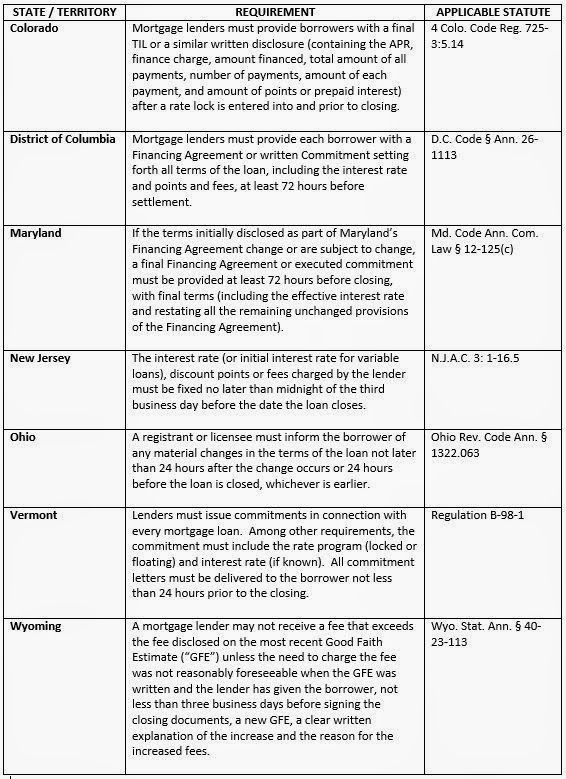QUESTION
We are a residential mortgage
lender. Customers are asking us if we
can order an appraisal prior to their submission of an application to us so
that they are sure that the property will appraise sufficiently. We are aware that if a customer orders an
appraisal we would not be able to accept it, as it will not be in our name and
our investors do not allow for a transfer of the appraisal. We would like to
accommodate our customers by offering this service and helping them avoid
paying for an appraisal twice.
We envision that we will order
the appraisal with the customer paying for the appraisal at the time it is
done. The appraisal report will come directly to us as the lender and then we
will provide a copy of the appraisal to the customer. If the customer then wants
to proceed, we will use the same appraisal to support the loan. Is the
foregoing procedure permissible and, if so, are there any risks to proceeding
in this manner?
ANSWER
While it is understandable that
the customer does not want to pay for an appraisal twice and you as the lender
want to accommodate your customers, for
the reasons set forth below, it is recommended that a lender does not order the
appraisal prior to issuing initial disclosures and obtaining an intent to
proceed. Your scenario is fraught with RESPA, Fair Lending and UDAAP
implications.
You state that the potential
applicant will pay for the appraisal “at the time it is done”. If the idea
is that the customer will pay the appraiser directly at the time he does the
appraisal, and if the appraisal is to be later used to support the loan, this
is not permissible. Appraiser Independence requirements do not permit an
appraiser to collect payment directly from the borrower. The lender or its
designated third party must select, retain, and provide for all compensation to
the appraiser. So, if the appraisal is to be used in the loan origination
process, the lender must be the party that orders the appraisal and pays for
same.
Similarly, it is not permissible
for the customer is to pay the lender upfront with the lender remitting payment
to the appraiser, as this scenario constitutes a RESPA violation. In
order to collect payment from the applicant, the lender must charge the
applicant the cost of the appraisal. Under RESPA, a lender, cannot charge a
potential loan applicant any fee, including an appraisal fee, prior to issuing
the GFE and the applicant indicating an intent to proceed. Although RESPA
does not prevent a lender from ordering the appraisal prior to the issuance of
the GFE and receipt of an intent to proceed, in the event the potential
applicant does not proceed with an application or the transaction does not
close, the lender runs the risk it will not be able to seek reimbursement from
the potential applicant.
Even if the lender is willing to
assume the risk of non-payment, this scenario presents many other issues,
including possible TILA and RESPA disclosure violations. The lender needs to determine
what information it has in its possession. If the loan originator has
enough information from the potential applicant to identify the property and is
willing to order an appraisal (and take the risk of not being paid for the
appraisal), it is probable that the LO has sufficient information from the
applicant to have an application triggering disclosure obligations.
Additionally, although a lender
may look at absorbing the cost of the appraisals that do not close as a “cost
of doing business”, this scenario may subject a lender to fair lending
implications. It is difficult to justify having one set of applicants who
are required to pay for appraisals up front (after giving an intent to proceed)
but never close the transaction for whatever reason, and another group of
applicants who obtain “free” appraisals because the application fails to
close. If a non-protected group is receiving the benefit of these “free”
appraisals, while a protected group is not receiving this benefit, there will be
a fair lending issue.
In addition to fair lending concerns,
Unfair Deceptive or Abusive Acts and Practices (UDAAP) should be considered. If
a loan officer tells the potential applicant (who has not received a GFE or
other disclosures) that the lender will order the appraisal which the applicant
can pay for at a later date, the lender may be creating an impression in the applicant’s
mind that the applicant is obligated to proceed with the transaction notwithstanding
that he has not received the GFE or other disclosures. The purpose of the
GFE is to allow the applicant to compare offers, understand the real cost of
the loan, and make informed decisions in choosing a loan. In ordering the
appraisal, the LO may be creating the impression that the applicant is not
permitted to shop and compare loans, and must continue with the application,
irrespective of the fact that the applicant has not been given sufficient
information to make an informed decision in choosing a loan. This could be
viewed as a deceptive practice.
The bottom line is that the appraisal
ordered by the lender is for the lender’s benefit. If the potential
applicant wants an appraisal to verify value prior to bidding on a property,
refinancing, etc., it is best that he directly contract for his own appraisal.
Joyce Wilkins Pollison
Director/Legal & Regulatory Compliance
Lenders Compliance Group

